I tried the world's first virtual reality theme park, and it was better than anything I could've imagined
The teaser video, which has amassed over 3 million views in roughly four months online, shows what it would be like to jump inside a movie or video game to live out a realistic adventure in The Void.

At first, The Void seemed too good to be true. I've tried countless virtual reality experiences from some of the biggest companies working in the space, including Oculus, Sony, HTC and Valve. How could a small team of engineers and designers in Utah possibly do anything better?
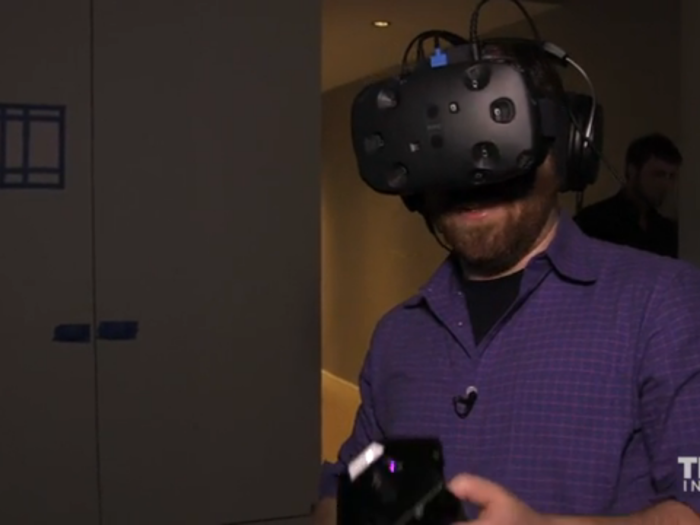
We needed to know if The Void was legitimate. So we booked tickets to Utah to meet the crew and see if the company could live up to the promise from its promo video.

The Void's headquarters in Pleasant Grove, Utah, are completely unassuming. The station is wedged between several other small businesses in a single, quiet row of office spaces.
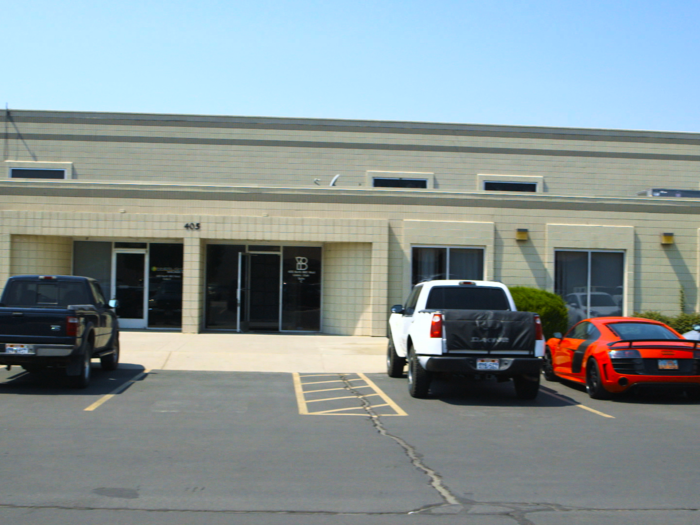
The office itself is small, white, and clean, but also decorated with signs and paintings of The Void. There's a door right across from the main entrance, which is actually the entryway into the "warehouse" where The Void sets up its various virtual reality experiences.
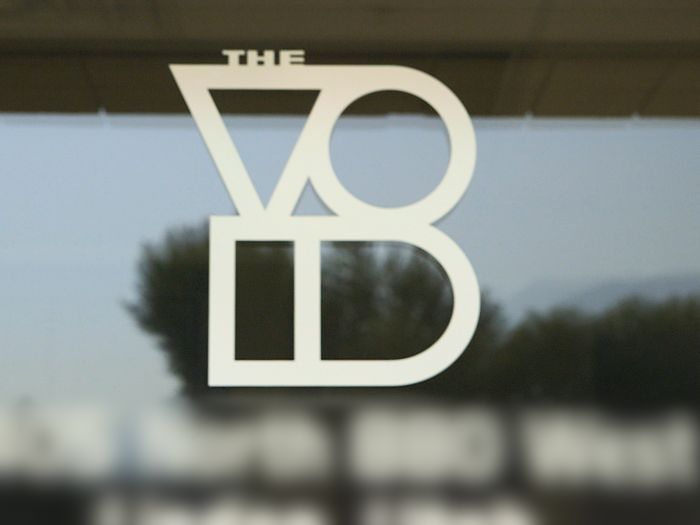
As we walked into the building, we bumped into Yan-David Erlich, a founder and CEO of a couple of Silicon Valley companies, as he was exiting the warehouse after his first experience in The Void. We asked for his impressions, and he had extremely positive things to say. "It was amazing. It's more fun than a video game and more entertaining than a movie because you're participating in it." My own skepticism was beginning to give way.
Minutes later, The Void's COO Curtis Hickman walked me into the warehouse. It was dark and reminiscent of a laser tag arena.
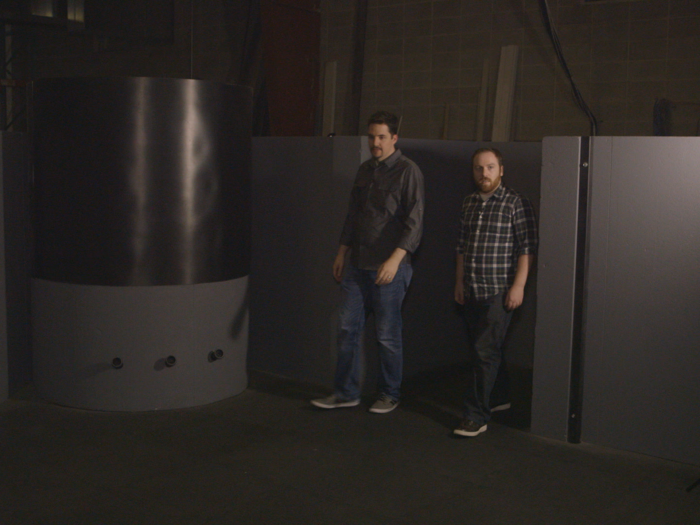
Once I walked up the stairs, my handlers at The Void gave me a headset to wear and a "backtop" — a laptop you wear like a backpack. Here's The Void's CTO James Jensen wearing a version of the getup, which is also on the mannequin behind him.

http://instagram.com/p/2mH5l-Q6Cd/embed/
Width: 1000px
I donned the headset and "backtop." They asked me if I was ready. I gave the thumbs-up.
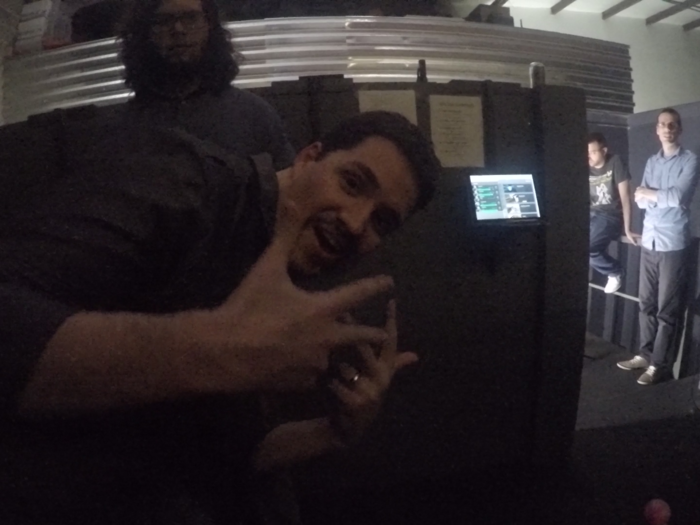
Suddenly, I was in The Void. The black foam walls had disappeared, replaced by a blue ethereal space with floating cubes that seemed to stretch on for eternity.
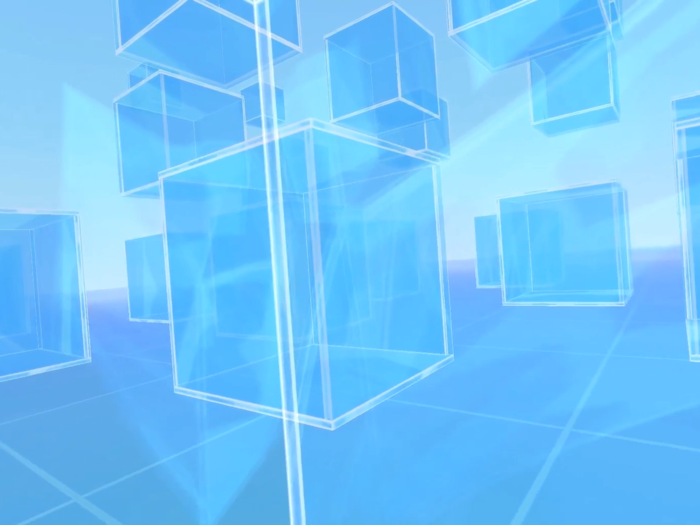
A female voice welcomed me to The Void, helped me configure the accuracy of the headset, and asked me to fire my gun, which I found floating in mid-air (a handler was holding it in front of me). I snatched it from the air and fired it off. The physical mold vibrated with each shot. Very cool.

Then, a portal started opening up right behind me. I turned to face it and was encouraged to walk through. It felt like being asked to step off the roof of a building. I had no idea if my feet would find the ground again.
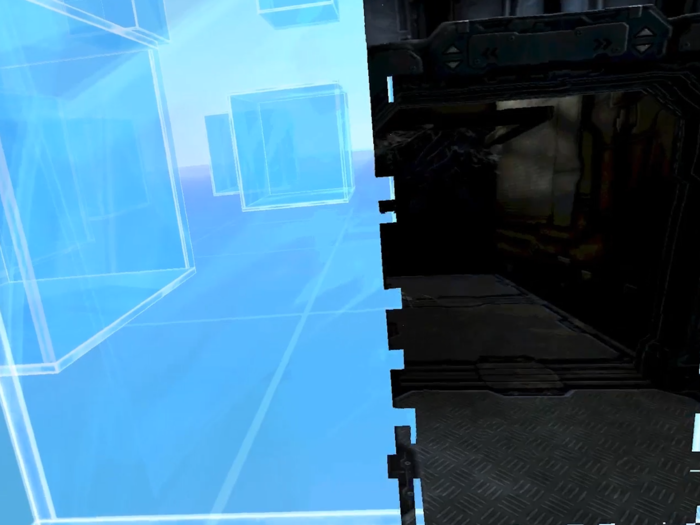
As I stepped through the portal, my remaining reluctance finally disappeared.
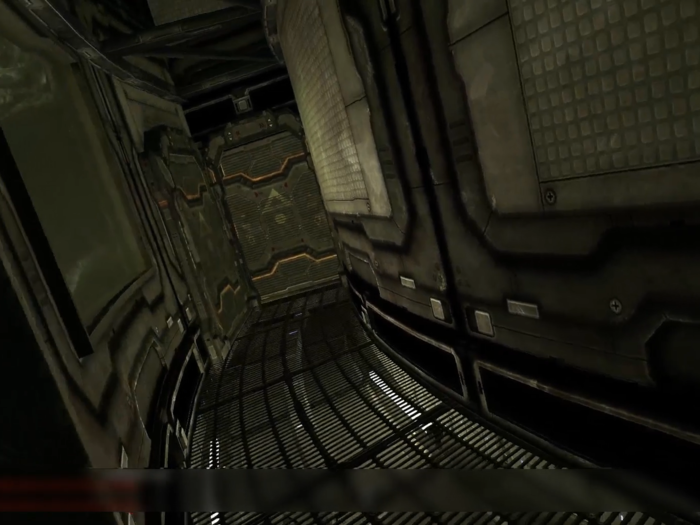
I was immediately thrust into this new world — I was in some kind of industrial-looking laboratory, with space-age doors and walls. I turned a corner to find a bunch of creepy yellow spiders hissing and threatening me, so I shot them with my gun, and they each exploded. I laughed with glee and kept moving forward in wonder.

As I turned the corner, I walked "outside" for the first time — mind you, I was still inside The Void's warehouse, but I could see a grand alien vista with mountains and green air, and more importantly, I could feel the breeze on my face. Yes, a real breeze.
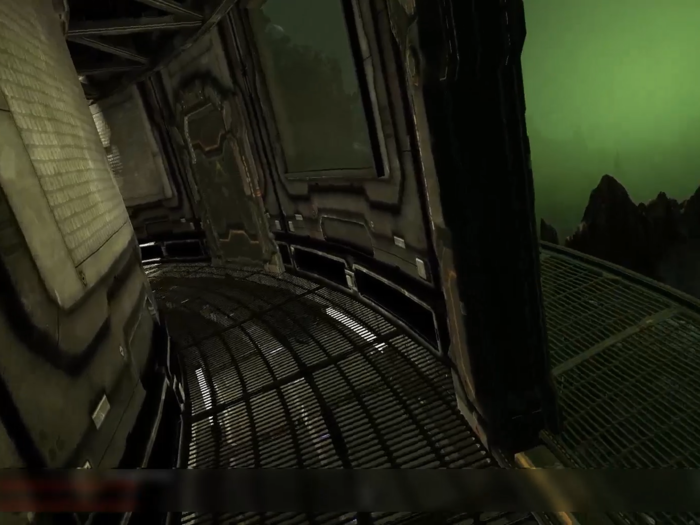
The Void considered all sorts of physical cues to make virtual reality come to life, including the use of heaters, mist-sprayers, and fans to help you feel different variations of inside and outside.
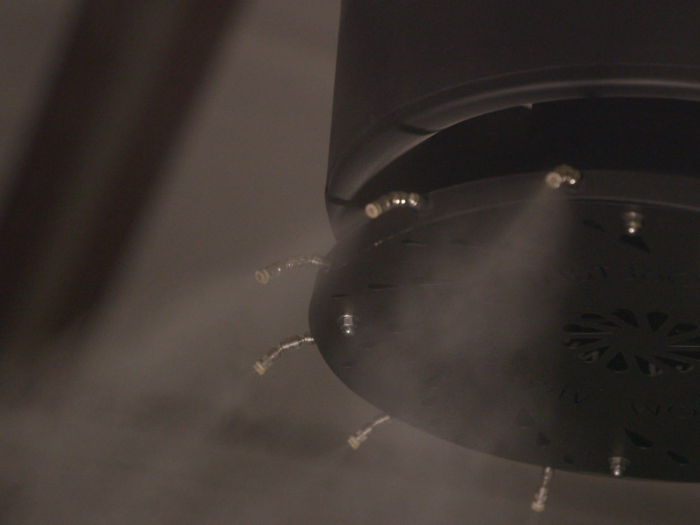
While enjoying my view, a drone suddenly flew in front of my face, just begging to be shot at with my gun. Several other drones appeared, and they all began firing blue laser beams at me. As I ducked and strafed out of the way, I fired back at the robots, downing each one with several well-placed shots. It was fun! I could see standalone arcade games emulating this look and feel.
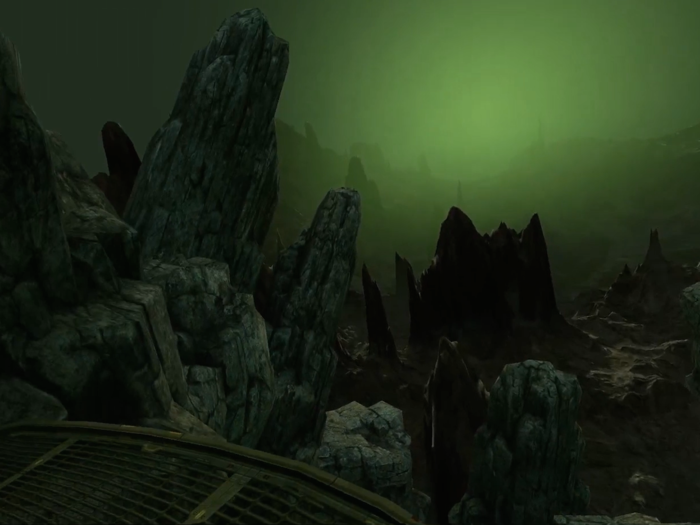
In the final part of my first Void demo, I discovered an alien stuck in a glass tube. I approached it, and of course, the alien sprang out, breaking through the glass and falling in front of my feet. I jumped backwards, but as the alien tried to escape by climbing up the wall, I shot it down. I playfully nudged its lifeless body with my virtual gun, which surprisingly worked as intended, and left the room. My first experience was over.
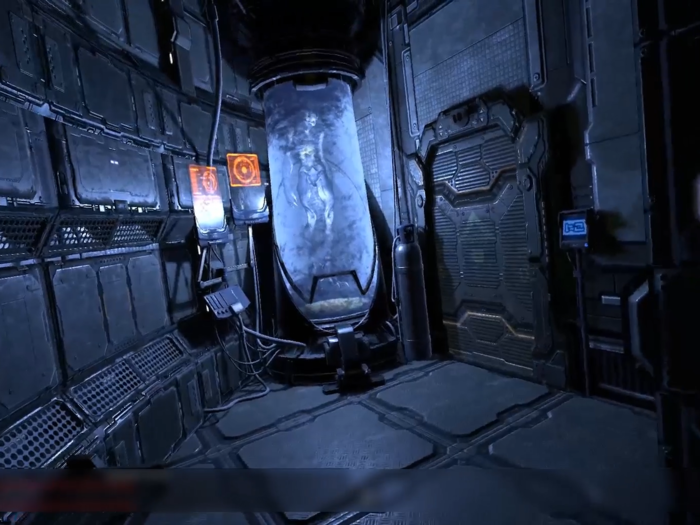
Besides this "space lab" experience, I also got try a demo set in an ancient Aztec temple, where you start "outside" in a beautiful jungle and make your way through the temple's maze, following signs and even solving a clever puzzle to find the hidden treasure and escape the temple.
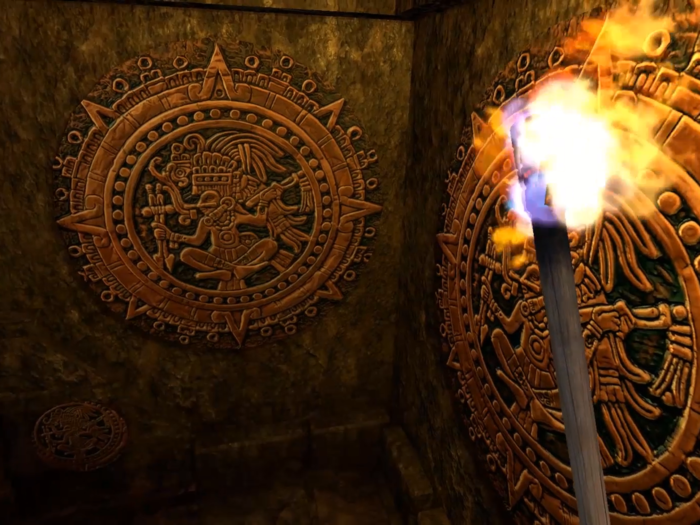
Worth noting: You hold a torch throughout this particular experience to illuminate your surroundings, but you can also see your hands, too. It feels eerie and real.
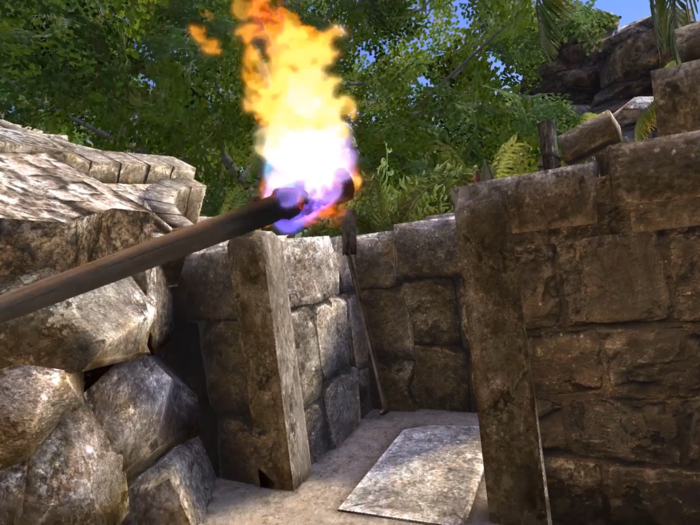
Though I only tried two experiences in The Void, I'm certain this is the ultimate application for virtual reality, and a major step forward for the future of entertainment as a whole.
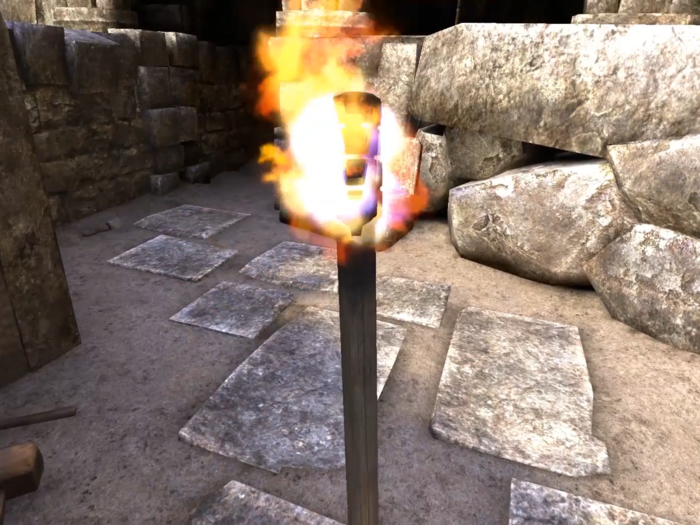
Every time I've tried a new virtual reality experience, I've been "wowed." But if each new game or movie in VR is a tiny step forward, The Void is a major leap ahead of everything else.
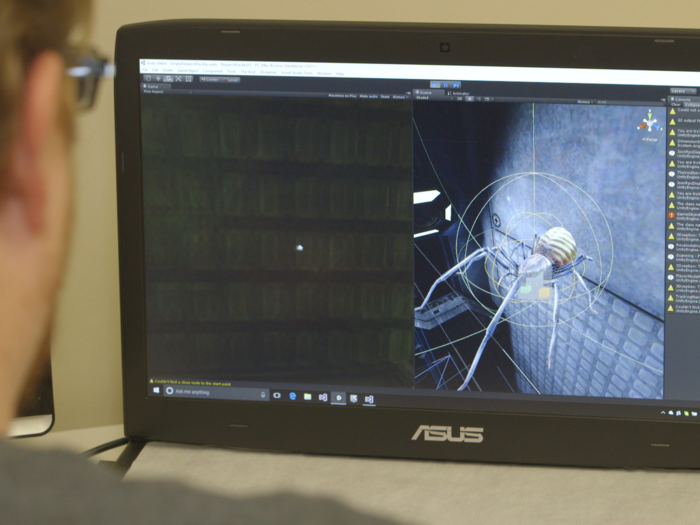
Virtual reality is all about immersing yourself in artificial experiences, particularly those that are either too dangerous, too expensive, or simply impossible to try in real life. But The Void takes this idea to a new level: Walking around physical spaces lets you actually feel like you're living your adventure, not just watching from a stationary position. And the physical effects — the wind, the water, the heat — contribute to the overall verisimilitude of the virtual reality.
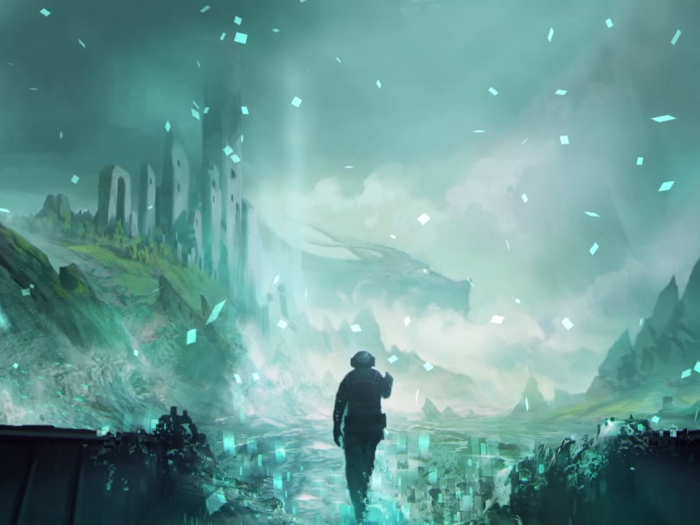
The possibilities are truly, actually endless.
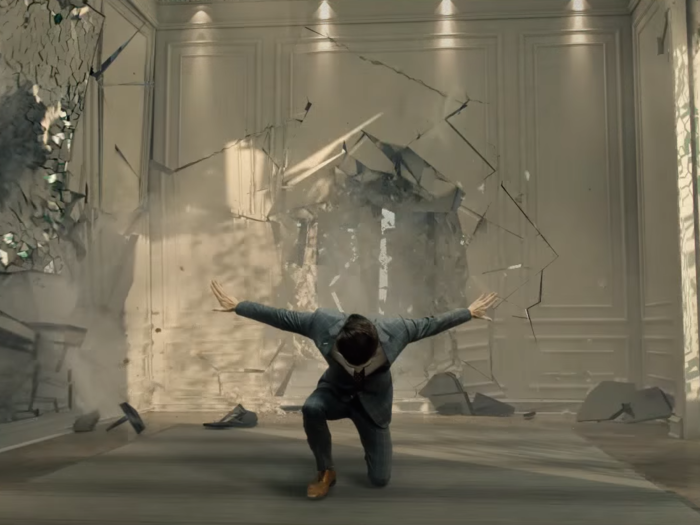
Though the experiences I tried are still technically in the "alpha" and "pre-alpha" stages, The Void plans on improving both the hardware and software until it can open a "beta center," which would be roughly four times the size of the physical space in the company's warehouse. The success of that first beta center would dictate the expansion plans for other beta centers around the country and the globe.

But what's so impressive about The Void is how cleverly they use this space: Without giving away any trade secrets, The Void can utilize several rooms physical again and again, guiding you through them in a different order, and laying different virtual elements on top so you'd never know it unless you removed your headset. It's wildly innovative.
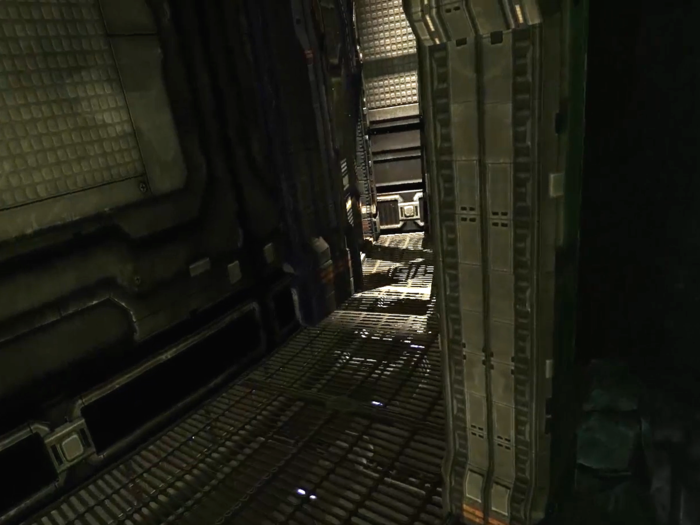
It's clear The Void has stumbled onto something brilliant. Despite the lofty ambitions and disproportionately small team working on this project, every single engineer and designer I spoke to was passionate about this project. Most responses fit a similar narrative: "I'm actually excited about coming into work every day," and "I couldn't imagine what I'd be doing if I wasn't here." These folks are committed to creating a better form of entertainment.
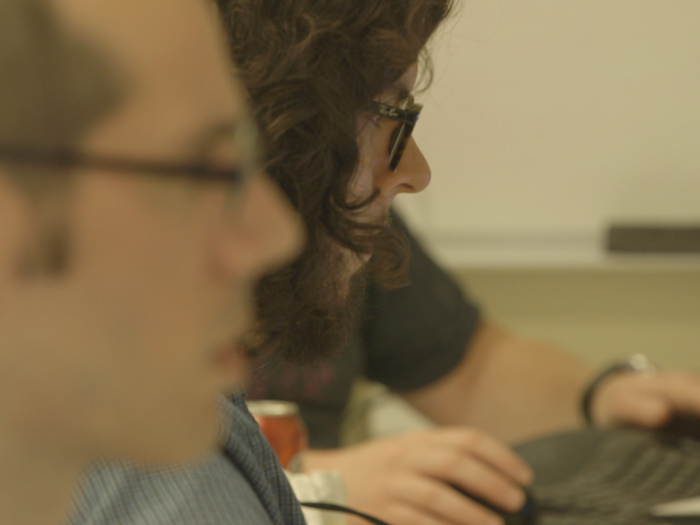
It's unclear how quickly The Void will grow, or if others, possibly with deeper pockets or better connections within the VR space, can replicate what The Void has accomplished and do it better. But right now, The Void has built the best virtual reality experience I've ever tried, and it could be the vehicle to bring virtual reality to the masses. The Void presents virtual reality in the best possible light: Accessible, fun, and incredible innovative. It's nothing short of magical.
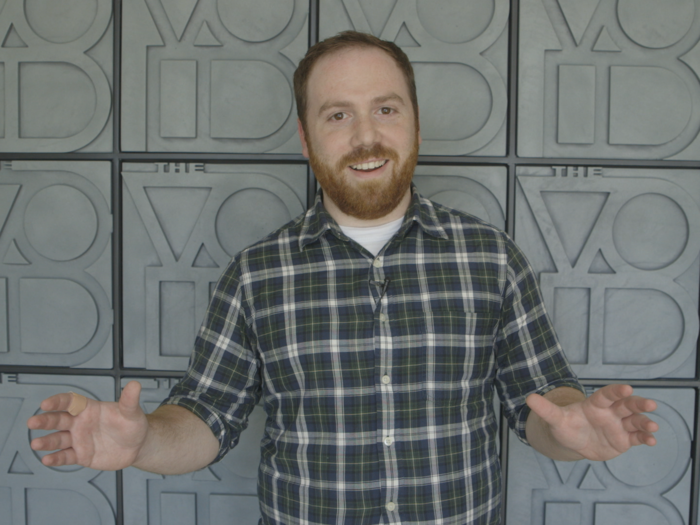
Popular Right Now
Popular Keywords
Advertisement